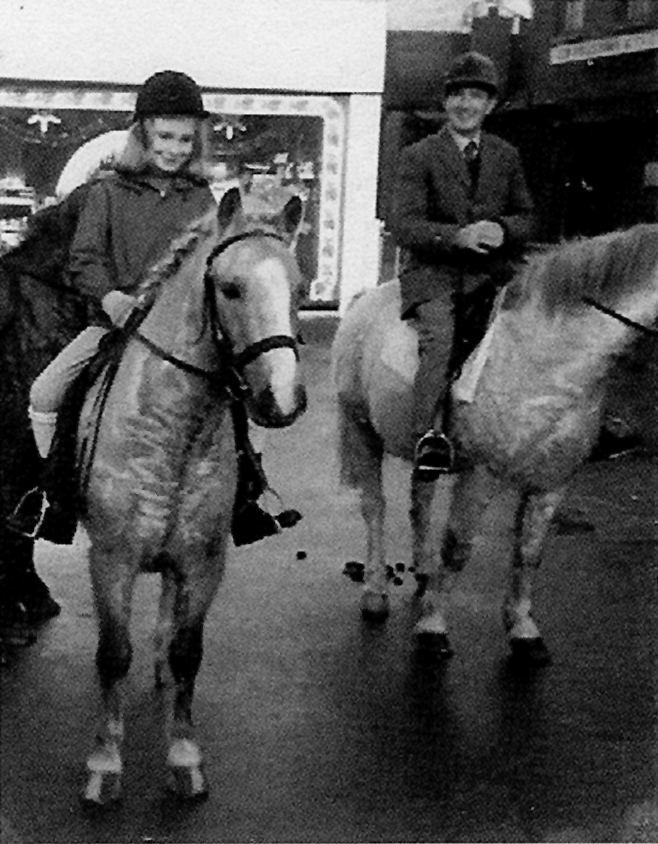Many businesses would have owned horses for their transport needs and professional people would have ridden a horse to see patients and clients. Most people would have either been able to ride horses or certainly been used to handling them. Being able to ride a horse then, was as normal as being able to ride a bike is now. Every village would have had a saddler and harness maker and towns would have several.
From my childhood memories in the 40’s and S0’s there were three riding schools in Marlborough, one on the banks of the Kennet opposite the Mustard Seed shop with an access by the lodge house on George Lane and grazing in Cooper’s Meadow, Jimmy Duck’s stables up Hyde Lane (now re-placed by a car park) with grazing in Duck’s Meadow and Mr Halliwell with stables on the Common and grazing on the Common opposite.
Many Marlburians over the age of fifty will have happy memories of being taught to ride by Mr Halliwell.











